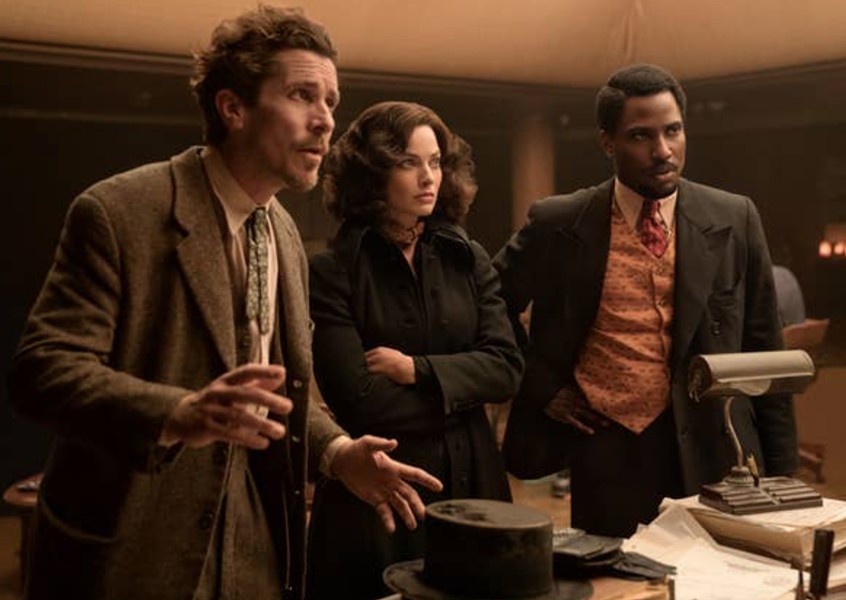Preaching to the Choir
Published: 14 October 2022
By Chuck Bowen

new_amster
Christian Bale, Margot Robbie and John David Washington in David O. Russell's wacky murder mystery/anti-fascism message movie, "Amsterdam."
David O. Russell’s star-studded whirligig, “Amsterdam,” drives a restless plot nowhere.
As is often the case with maligned movies which are eclipsed by the mob mentality itself, David O. Russell’s “Amsterdam” is nowhere near as bad as rumored. Quite the contrary, in fact: For large passages, it’s an unusually funny and raw mainstream American movie with a real sense of adventure and swing, until it derails in the third act. Said third act, one of the worst examples of sanctimonious Hollywood preaching in recent memory, and there’s plenty of competition, is probably the main cause of those terrible reviews. Although modern critics like to be preached to, so who knows?
“Amsterdam” is obsessed with plot, which is probably part of the problem it’s having with audiences. A character can’t get from point A to point B; he or she must meet a handful of people with elaborate backstories, which involve other people with more backstories. I thought of Paul Thomas Anderson’s “Inherent Vice.” These films have different milieus—“Amsterdam” is mostly set in 1930s-era New York City, with attending hustle and bustle, while “Inherent Vice” is set in ‘70s-era Los Angeles, with attending druggy ennui—but both are consumed with narrative detours, stopping in their tracks to make room for a hip guest star or bit of shtick or blast of exposition.
In both movies, the plot convolutions mirror the distractions of daily life, which keep people so preoccupied that conspiracies can bloom in plain sight, allowing governments to control and exploit us. “Amsterdam” is a glitzy, glossy bauble made by rich people about the corruption of the rich—a familiar hypocrisy that Russell interrogates until he doesn’t. The loose camerawork contrasts with precise editing. In the middle of a long and extraneous riff session between various actors, there may be a hard cut to, say, the damage wrought to human bodies by prolonged trench warfare in World War I. Then, we cut back to the attractive stars. The effect, also utilized in Russell’s “Three Kings,” is to foster an awareness of the damage that pays for social privilege, and to consider the damage that distractions allow most of us to ignore. It’s too easy to look beyond a veteran to savor something in the jewelry store window.
Read the entire article on the Style Weekly web site.
External Web Site Notice: This page contains information directly presented from an external source. The terms and conditions of this page may not be the same as those of this website. Click here to read the full disclaimer notice for external web sites. Thank you.



